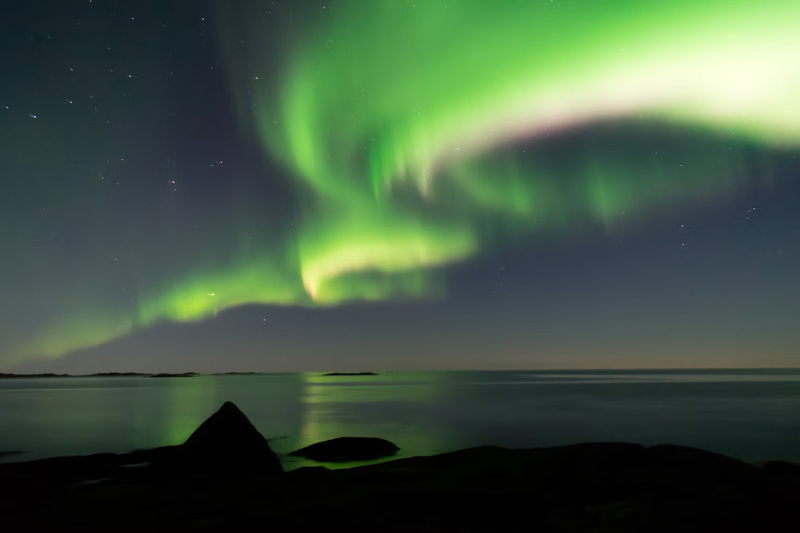It’s rare, but Northern Lights can be seen in Bay Area

 SAN FRANCISCO BAY AREA (Apr. 10, 2022) — A few weeks ago, a Northern Lights episode was forecast to extend south and become visible to residents in states along the Canadian border.
SAN FRANCISCO BAY AREA (Apr. 10, 2022) — A few weeks ago, a Northern Lights episode was forecast to extend south and become visible to residents in states along the Canadian border.
These light shows in the sky appear frequently inside the Arctic Circle, and occasionally south to the northern United States. However, they are rarely visible as far south as the Bay Area.
What we call the Northern Lights is a subset of an upper atmospheric phenomenon called aurora ovals. Such events in our hemisphere are known as Aurora Borealis; southern hemisphere events are called Aurora Australis.
The aurora is a colorful glow seen in the skies above Earth’s magnetic poles. When electrons streaming from the sun collide with gas molecules in the Earth’s outer atmosphere, they gain energy. To get back to a normal state, they release that energy in the form of light.
Light and color
The composition of the atmosphere and the altitude of the collisions determine the color pattern of each light display. Near the poles, the aurora is most often observed in ribbons of green or yellow. Occasionally, other colors of the rainbow appear.
The altitude of the light shows ranges from 60 miles to more than 200 miles above the Earth’s surface. At the low end of that layer, streaming electrons strike oxygen molecules and produce green and yellow auras. At higher altitudes, oxygen produces red auroras. Solar winds striking nitrogen molecules produce the blue and red hues.
Auroras are not rare, due to the continuity of the solar wind delivering the sun’s ejected electrons to our atmosphere. In light solar wind conditions, auroras become very faint and are only visible at the highest latitudes. Strong solar wind conditions, which are highly correlated with sunspot and solar flare events, produce the large widespread aurora ovals that are visible at lower latitudes.
As it turns out, aurora events are observed occasionally in the Bay Area. In September 1859, during the most intense geomagnetic storm in recorded history, charge-lit skies were seen as far south as central Mexico.
A description of the local 1859 event in the San Francisco Journal states: “The greatest illumination was at about twenty minutes before ten o’clock, when the light was so brilliant that it shone on Telegraph Hill and the upper story and cupola of Wright’s building.”
In the current century, weak events were observed locally in 2001, 2012 and 2015.
Sunspots and solar flares
The number of sunspots and solar flares follows a fairly regular cycle. Observational data from the last 150 years indicates that sunspot and solar flare activity tends to peak every 11 years. This peak is called the solar maximum. The last solar maximum was in 2014.
As we move toward the next solar maximum, the chances for a Northern Lights sighting in the Bay Area will increase. Thanks to telescope and satellite data, accurate daily northern hemisphere aurora forecasts are available on a website maintained by the University of Alaska at this website.
When a local aurora event does unfold, let’s hope the forecast calls for clear skies. The best light shows occur in areas with clear skies and low levels of man-made light and air pollution. The top of Mount Diablo would make an ideal Aurora Borealis viewing platform.
Email questions or comments to Woody Whitlatch at clayton_909@yahoo.com.

Woody Whitlatch
Woody Whitlatch is a meteorologist retired from PG&E. Email your questions or comments to
clayton_909@yahoo.com
